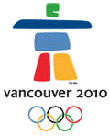.
|
Articles Footlose
in
Vancouver The
Mighty
Yellowhead Rocky
Mountain
Romance THIS
EDITION IS IN PROGRESS. MORE TO
COME Museums |
|
Editor's
note: One of the highlights of our
career in publishing was a visit to
Railfair in Sacramento. It was held at
the California State Railroad Museum
and was certainly an event to remember.
We hope Railfair continues. The
Railroad Technology Museum at the
Southern Pacific Railroad Sacramento
Shops Momentum
Builds with Completion of Reconstructed
Transfer Table In late
1999, the Museum secured a lease from
Union Pacific Railroad on the complex's
two main structures, the Boiler Shop
and Erecting Shop. These cavernous
structures both date from the days when
steam locomotives were built and
repaired at the Sacramento Shops.
Portions of the massive, brick Erecting
Shop date from 1869 and SP predecessor
Central Pacific Railroad (CP). As such,
the Southern Pacific Sacramento Shops
include the only surviving CP
structures standing when America's
first transcontinental railroad was
completed. In
early 2000, the Museum completed moving
its restoration facilities into the
former Boiler Shop. In order to fully
occupy the Erecting Shop with
full-sized locomotives and cars,
however, reconstruction of the Transfer
Table&emdash;a bridge-like structure
that allows access to the many "work
bays" within the Erecting
Shop&emdash;has been essential.
Construction of the Transfer Table
began during mid-2001, and it was
completed in spring 2003. This $500,000
project has been funded through State
Parks Deferred Maintenance allocations
and a major fundraising campaign
conducted by the CSRM Foundation in
2000-2001. The
completed Transfer Table now allows
access to the Erecting Shop for the
Museum's collection of historic
railroad locomotives and cars. Stored
outside for years, these historic
items&emdash;many awaiting
restoration&emdash;are considered a top
priority for conservation by the
Museum. Many of the locomotives and
cars will become exhibits within the
new Railroad Technology Museum,
showcasing over a century of
technological development and
innovation in the railroad
industry. Restoration
and maintenance activities for the
Museum's collection of full-sized
locomotives and cars have been
conducted since 2000 in the complex's
Boiler Shop. In December 2002, the
latest project&emdash;refurbishment of
a 1920s vintage coach with a
Missouri-Kansas-Texas Railroad heritage
for operation on the Museum's excursion
railroad, the Sacramento
Southern&emdash;was completed at the
facility. Construction of the Transfer
Table has also taken place in the
complex's Boiler Shop, given its
proximity to necessary tools and
expertise. Ongoing
maintenance of the Museum's operating
steam and diesel locomotives takes
place in the Boiler Shop, along with
maintenance of the Museum's coaches and
converted freight cars which regularly
carry school groups in spring and fall,
and families during the summer. The
necessary support systems for the
Museum's operating
railroad&emdash;track materials,
specialized machinery, and wayside and
at-grade crossing signals&emdash;are
built and maintained here as well. Also
under way is a railcar conservation
project for another State Park, Colonel
Allensworth State Historic Park,
attesting to the Shops' ability to
provide skills and tooling for a
variety of activities. Background The
Railroad Technology Museum (RTM)
was envisioned in the very first
planning documents created to guide
development of the California State
Railroad Museum. Planning for the RTM
began in the mid-1980s, following
completion of CSRM's flagship, the
100,000 square-foot Railroad History
Museum in Old Sacramento. Intended to
complement that facility, the RTM would
convert a portion of the 44-acre
historic Southern Pacific Sacramento
Shops site into a dynamic cultural
attraction. The
ambitious project would increase the
drawing power of Sacramento as a
cultural and tourism destination, and
provide a unique focal point for
surrounding Downtown Railyards and
waterfront redevelopment efforts.
Originally envisioned at a waterfront
location south of Old Sacramento, the
Railroad Technology Museum is much
better suited for development in the
former Southern Pacific Sacramento
Shops. This adaptive yet historic
re-use project would preserve the very
structures that best commemorate and
celebrate the history and technology of
railroading in California. It
would benefit the Museum's commercial
and residential
neighbors&emdash;including Old
Sacramento, the Union Pacific Railroad,
and the City and County of
Sacramento&emdash;and help spur
redevelopment of the Railyards in a
positive, historically appropriate
manner. The spacious railroad shop
buildings would house CSRM's collection
of historic locomotives and railroad
cars, plus formal museum exhibit
galleries interpreting railroad
engineering and technology. Children
would have the opportunity to explore
fundamental physics and engineering
principles through hands-on,
interactive exhibits. Through the use
of sectioned locomotives, scale models,
interactive displays, oral histories,
and other interpretive techniques, the
Museum and its staff would educate the
public about steam and diesel
locomotion, track structure design and
wheel interface, the importance of the
Shops and its labor force in the
development of Sacramento, and the
relevance of railroads in helping meet
the transportation challenges of the
future for California and the United
States. Another
significant aspect of the Railroad
Technology Museum is the opportunity
for the public to regularly view
ongoing restoration work. Previously,
this important aspect of the California
State Railroad Museum's work has been
conducted offsite, not accessible to
the public. The ability to watch
artisans working "real time" on steam
and diesel locomotives, wooden and
steel railroad cars, and other types of
projects has significant informational
and educational value. The facility
could easily support curriculum-based
educational programs for teenagers and
young adults. Vocational educational
programs could be established in
conjunction with ongoing renovation
work, offering new skills training and
development. To this
end, the Sacramento City Council in
late 1999 voted unanimously in support
of the concept of locating the Railroad
Technology Museum in the former
Southern Pacific Sacramento Shops. The
Railroad Technology Museum portion of
the project is estimated to cost
approximately $25 million. Development
of other existing structures within the
historic Shops complex are being
discussed with the Union Pacific
Railroad and railyard developers, as
well as other cultural organizations
potentially interested in the
site. Benefiting
the Community The
Railroad Technology Museum represents a
unique opportunity to secure public
stewardship of the oldest (and for a
time, largest) industrial complex west
of the Mississippi River, which for 80
years was also the Central Valley's
largest employer. It would create an
urban museum complex contiguous with
the Old Sacramento Historic District,
itself internationally known, and its
location and appeal would help foster
surrounding transit-oriented
development. The
Railroad Technology Museum would
benefit the community in numerous ways.
As the region's largest employer for
decades, the Southern Pacific
Sacramento Shops fundamentally
influenced the development,
concentration, and growth of many
ethnic groups in Sacramento and the
Central Valley. Ethnic diversity and
community pride will be demonstrated
through ongoing study and exhibition
focused on the thousands of workers
once employed in the Shops. The
California State Railroad Museum is
uniquely equipped to foster the
preservation and appreciation of
California's rich railroading heritage.
The Museum's primary mission is to
preserve key railroad heritage
resources, and make them available to
the widest possible audience. Assisting
the Museum (a unit of California State
Parks) in its mission is the California
State Railroad Museum Foundation, a
non-profit organization chartered to
raise and manage funds on behalf of the
Museum and to provide a variety of
additional support services. Operated
by California State Parks with
assistance from the non-profit CSRM
Foundation, the California State
Railroad Museum is open daily from 10
a.m. to 5 p.m. except Thanksgiving,
Christmas, and New Year's Day. Widely
regarded as North America's finest and
most-visited railroad museum, the
complex of facilities includes the
100,000-square foot Museum of Railroad
History plus the reconstructed Central
Pacific Railroad Passenger Station and
Freight Depot, 1849 Eagle Theatre, and
Big Four and Dingley Spice Mill
buildings in Old Sacramento State
Historic Park. From
our magazine's office overlooking "Maple Tree
Square," and the statue of Gassy Jack, our staff
and visitors witness this magical transformation
daily, as Gastown continues to amaze and
delight. By day it's a magnet for hordes of
tourists and locals, who flock to the art
galleries, antique stores and native crafts
shops, bistros and sidewalk cafes. Want the name
of one of the neatest card shops in town, where
you can find something unique for any occasion?
Visit Kim Prints on Powell Street in the lower
floor of the famous Europe Hotel, opposite Gassy
Jack's statue (in above photo). This
display of 75 to 100 Classic and heritage cars
took place from on Saturday Sept 04, 2004 in the
Gastown district of Vancouver. Water Street was
closed off for the day and cars were displayed
from the Gassy Jack statue all the way to
Granville Square. There was celebrity judging of
the vehicles with awards for six categories of
which "Most Elegant Car" will be the
pièce de résistance. At
last, the Pacific Northwest has a concours to
rank with the best. Steamworks Concours
d'Elégance in Vancouver BC's historic
Gastown district. Similar to New York's
prestigious Louis Vuitton concours, this is an
"invitation only" event with up to 100 rare and
beautiful classics on display, competing for the
title of "most elegant car." The Steamworks is a
brew pub adjacent to the famous steam clock, a
9-foot tall, antique sidewalk-mounted clock that
announces the hour by a whistle and huge puff of
steam. Gastown's streets are paved with bricks,
its buildings dating back to Vancouver's wilder
days when it was first established as a major
west coast port. A wonderful locale for what
will surely become a prime stop on the vintage
car calendar.. Web site:http://vintagecars.about.com/b/a/2003_08_26.htm My
early impressions of Gastown were much
different. Each Saturday, I worked as a swamper,
loading cases of grocery items from its busy
warehouses and those of nearby Yaletown, the
newest trendy district. As a youngster, Gastown
was already an exciting place to visit, as the
North Van ferry docked at the foot of Columbia
Street. Woodward's Department store stood like a
glorious beacon, the Army & Navy store was a
Mecca for kids shopping for war surplus,
Chinatown was where we renewed our arsenal of
fireworks, and East Hastings Street was a blaze
of neon. Gastown
springs to life each evening, with ethnic fare,
gourmet dining, live entertainment and a variety
of bars, pubs, and comedy acts. This diversity
has prompted many young, upwardly mobile
Vancouverites to consider our new urban hotspot
as a unique place to live. It's a generation
that seeks what Monty Python calls "something
completely different"... which they're
discovering right here in Vancouver's
Gastown. If
you have an item on Gastown or any other BC
Community. Send it to Airways BC Scene:
airhwy@dowco.co Add
your link to this list by email to:
Air
Highways Links Footloose
in Vancouver's West End and Stanley Park Defining
the West End's boundaries. From
cruising the fjords to cruising the streets Here
at the foot of Burrard Street, you might start
your trek after a quick stop at at the Tourism
Vancouver Info Center, leaving with some maps
and brochures. And as you look at the float
planes landing from Victoria, Nanaimo and points
beyond, you'll spot a new stretch of seawalk
that links the downtown's waterfront hotels with
Stanley Park, English Bay and False Creek. We
took the walk and viewed the upscale housing
developments near the Westin Bayshore Hotel and
Coal Harbor. Naturally, we stopped at the Marina
and Carderos, a new waterfront restaurant that's
got class, a reputation for great food, and a
million dollar view. Lotus
Land's laid-back lifestyle Head
for the nearest water or green space and you'll
see that West Enders are more into tennis, water
sports and physical fitness than their fellow
Canadians. They read, shop and dine out more
often too ... and take longer coffee and
cappuccino breaks. Small wonder Starbucks and
Pastels dominate 3 corners at Robson and
Thurlow, or that the local Bread Garden is
Denman's top spot. Next to Manhattan Island,
Vancouver's West End is the continent's most
densely populated residential area, yet one of
its most relaxed, laid back inner-city
communities. Speaking
of Manhattan ... a gingerbread apartment
block of that same name still stands at the
above-mentioned corner. It houses a secluded
Italian cafe and a neat bookstore, built for
those with narrow shoulders. Rivaling Hong Kong
and Rio de Janeiro as the world's most beautiful
physical setting, Vancouver has become Hollywood
North, ranking third after LA and New York as a
film and TV production center. The West End
alone has more unique locations and beautiful
backdrops than anywhere else in the
city. Visitors
are attracted to the city for the same reasons
most residents remain ... a spectacular outdoor
setting, a clean and safe urban environment and
a culture that celebrates and invites diversity.
For centuries this area was home to the Coast
Salish people of the Musqueam, Kwantlen,
Tsawwassen and Capilano bands as reflected by
the totems standing proudly in Stanley Park. It
was these tribes who greeted Captain George
Vancouver in 1792. His comment must have
referred to the forest and mountain backdrop of
Burrard Inlet., "This is the most lovely country
that could be imagined. "I n the late 1880s,
Vancouver's first mayor drafted a petition to
lease a 1,000 acre military reserve from the
federal government ... an area that later became
Stanley Park. Named for Governor General Lord
Stanley, it's Canada's largest urban park, with
its string of inner-city beaches and miles of
walking trails that skirt Beaver Lake and Lost
Lagoon, with its fountain of dancing waters and
graceful swans. Stands
of stately Douglas fir, cedar and hemlock grow
in profusion along with a jungle-like growth of
ferns. Open 365 days a year, the Vancouver
Aquarium in Stanley Park features killer and
beluga whales, dolphins and sea otters ... a
total of 650 species. There's underwater whale
viewing and outdoor terraces (Information line
604-268-9900). One
of my top perennial attractions is
Theater
Under the Stars,
where local performances of Broadway shows and
operettas fill the summer evenings with song at
Malkin Bowl. The surrounding gardens, statues
and 1920s Pavilion are as beautiful as ever.
Returning to Vancouver after a twenty year
absence, this is one venue that continues to
remind me of Stanley Park at its greatest.
There's no better place for a picnic than
Stanley Park, with a profusion of specialty
shops, food markets and delis on nearby
streets. The
inner-city's most popular loop Leaving
the park at English Bay, the seawall continues
on to Sunset Beach, Vancouver Aquatic Center and
Burrard Bridge, connecting to a network of urban
trails on both shores of False Creek, site of
Expo '86. Stanley Park Cycle is on Robson near
Denman, Bayshore Bicycle & Skate Rentals has
locations at both entrances to Stanley Park.
Give yourself plenty of time, from 2 to 4
hours. Visit
more of Vancouver on our Footloose Tours West
End
and Stanley Park |
||||||||||||
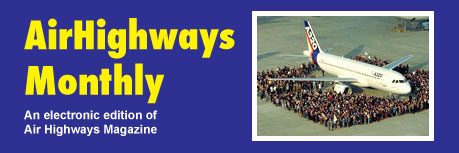


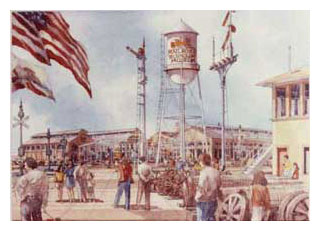 California
State Parks, with the support of the
California State Railroad Museum
Foundation, continues to make progress
toward placing the Railroad Museum's
next phase in the historic Southern
Pacific Sacramento Shops complex.
Located adjacent to downtown
Sacramento, the Shops are one of North
America's most important industrial
heritage sites. Proposed for the site
is the Railroad Technology Museum
(RTM), a major expansion of the
California State Railroad
Museum.
California
State Parks, with the support of the
California State Railroad Museum
Foundation, continues to make progress
toward placing the Railroad Museum's
next phase in the historic Southern
Pacific Sacramento Shops complex.
Located adjacent to downtown
Sacramento, the Shops are one of North
America's most important industrial
heritage sites. Proposed for the site
is the Railroad Technology Museum
(RTM), a major expansion of the
California State Railroad
Museum.
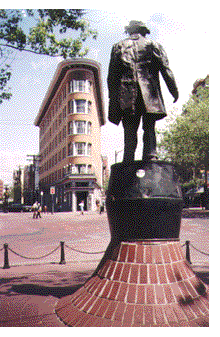 Have
you recently arrived for a cruise or convention?
Just steps from Canada Place, where Alaska-bound
cruise ships berth, the West Coast Express Train
rolls in, and float planes take off for BC's
Adventure Islands, historic Gastown begins. Its
cobblestone streets and ornate lampposts mark
this piece of history a living museum ... an
area of charm, character and curiosity.
Have
you recently arrived for a cruise or convention?
Just steps from Canada Place, where Alaska-bound
cruise ships berth, the West Coast Express Train
rolls in, and float planes take off for BC's
Adventure Islands, historic Gastown begins. Its
cobblestone streets and ornate lampposts mark
this piece of history a living museum ... an
area of charm, character and curiosity.
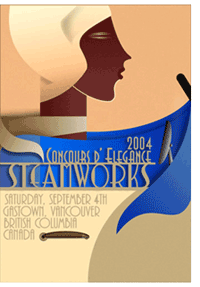
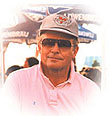 Having
been footloose in Vancouver, British Columbia
since the days of streetcars, interurban trams,
White Lunch Cafeteria on Hastings, Woodwards
Toyland and Union Steamships, I consider the
West End my special domain. Morning, noon or
night, it's always an inviting place for
rubber-neckers, casual strollers, browsers,
grazers and window shoppers. A sea of umbrellas
one moment, local denizens decked in everything
from beachwear to high fashion the next. It's a
passing parade, minus the 76 trombones-just
waiting for you to follow along.
Having
been footloose in Vancouver, British Columbia
since the days of streetcars, interurban trams,
White Lunch Cafeteria on Hastings, Woodwards
Toyland and Union Steamships, I consider the
West End my special domain. Morning, noon or
night, it's always an inviting place for
rubber-neckers, casual strollers, browsers,
grazers and window shoppers. A sea of umbrellas
one moment, local denizens decked in everything
from beachwear to high fashion the next. It's a
passing parade, minus the 76 trombones-just
waiting for you to follow along.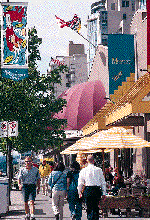 Recently,
we walked Vancouver Harbour's new stretch of
Seawall for the third time since the massive
construction project began. From historic
Gastown, we headed west to English Bay via the
Pan Pacific Hotel and Canada Place Cruise Ship
Center, Coal Harbor Marina, Cardero's and the
newly renovated Westin Bayshore Resort Hotel.
Next time we'll continue the full stretch to
Stanley Park (another 5 minutes) and beyond.
What a marvelous change with all the
landscaping, shops and upscale condos. I made my
rendezvous at the Coast Hotel at English Bay in
exactly 45 minutes, allowing for a leisurely
pace.
Recently,
we walked Vancouver Harbour's new stretch of
Seawall for the third time since the massive
construction project began. From historic
Gastown, we headed west to English Bay via the
Pan Pacific Hotel and Canada Place Cruise Ship
Center, Coal Harbor Marina, Cardero's and the
newly renovated Westin Bayshore Resort Hotel.
Next time we'll continue the full stretch to
Stanley Park (another 5 minutes) and beyond.
What a marvelous change with all the
landscaping, shops and upscale condos. I made my
rendezvous at the Coast Hotel at English Bay in
exactly 45 minutes, allowing for a leisurely
pace. On
the corner, the Marine Building stands like a
royal guard, its 1930s art deco facade every bit
as elegant as it was I attended the Faulkner
Smith Art School there years ago as an aspiring
cartoonist. Once touted as Vancouver's
skyscraper, tallest in the British Empire at the
time, it's now dwarfed by the glass towers of
the city's growing financial district. On the
Marine Building's ground floor is the Imperial
Chinese Seafood Restaurant, one of the classiest
oriental dining spots in town, graced by a
sweeping harbor view, with float planes,
helijets and marine craft of every description.
A snowcapped mountain backdrop completes the
panorama.
On
the corner, the Marine Building stands like a
royal guard, its 1930s art deco facade every bit
as elegant as it was I attended the Faulkner
Smith Art School there years ago as an aspiring
cartoonist. Once touted as Vancouver's
skyscraper, tallest in the British Empire at the
time, it's now dwarfed by the glass towers of
the city's growing financial district. On the
Marine Building's ground floor is the Imperial
Chinese Seafood Restaurant, one of the classiest
oriental dining spots in town, graced by a
sweeping harbor view, with float planes,
helijets and marine craft of every description.
A snowcapped mountain backdrop completes the
panorama.